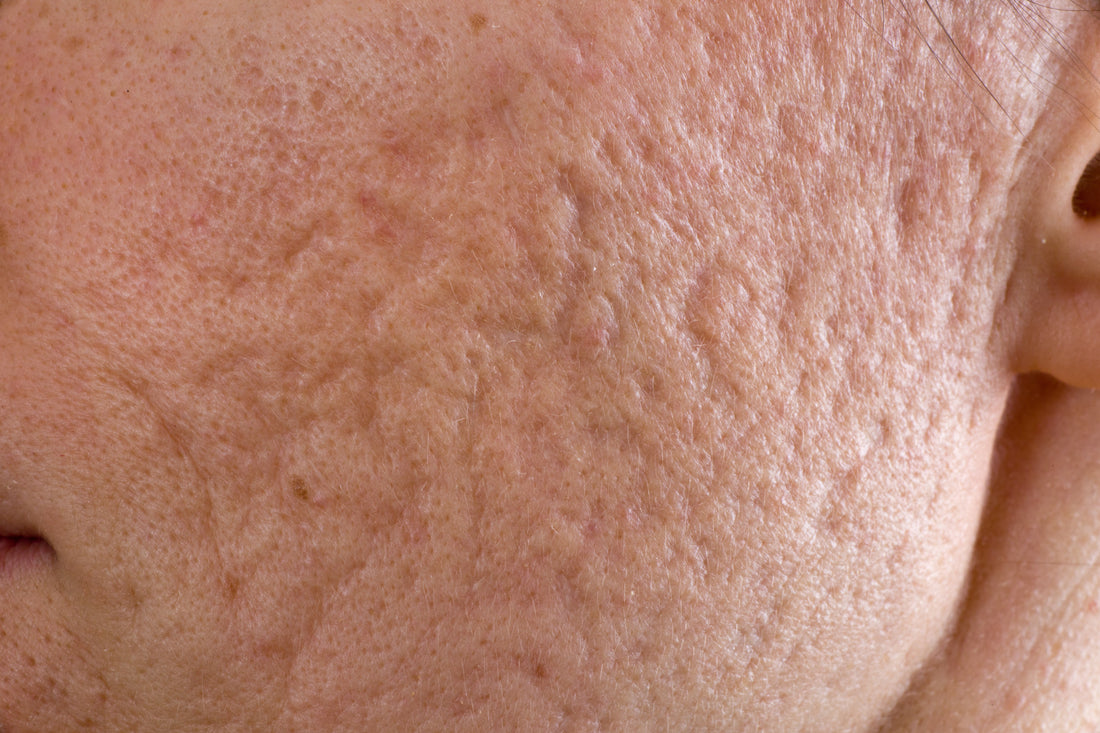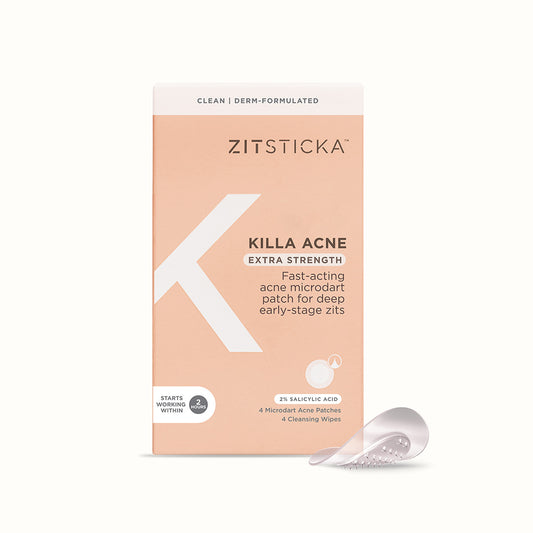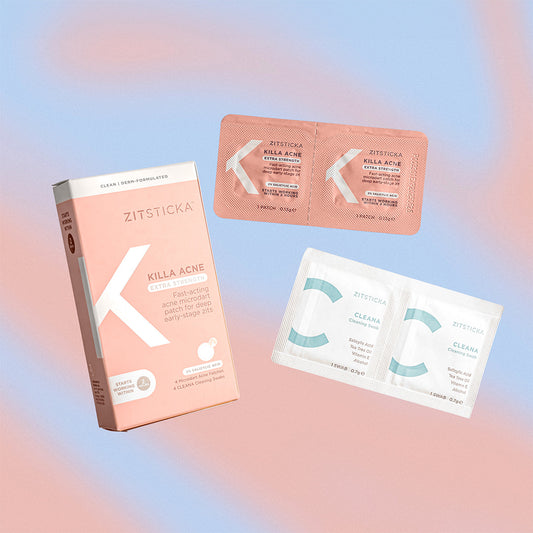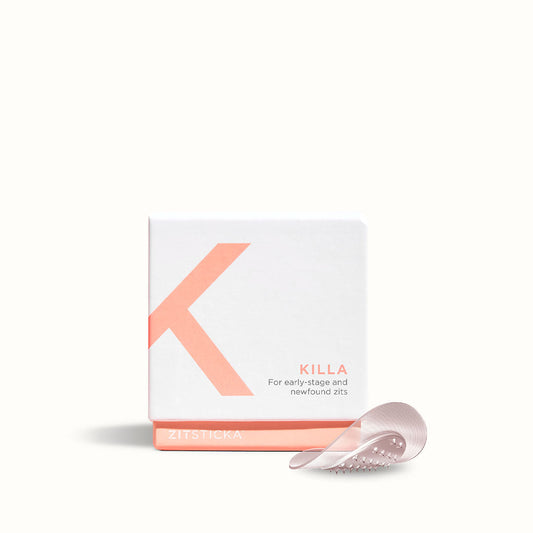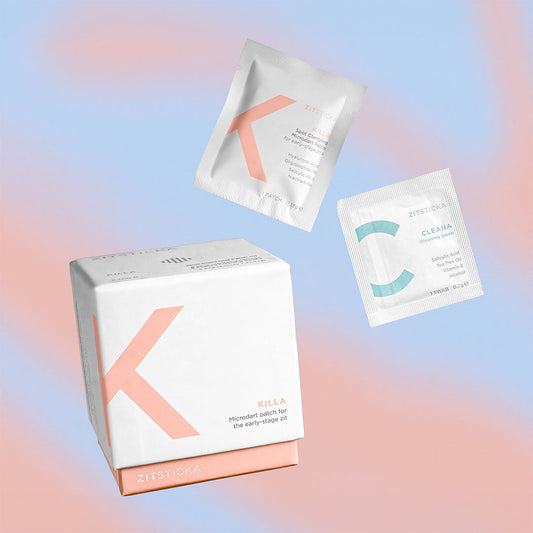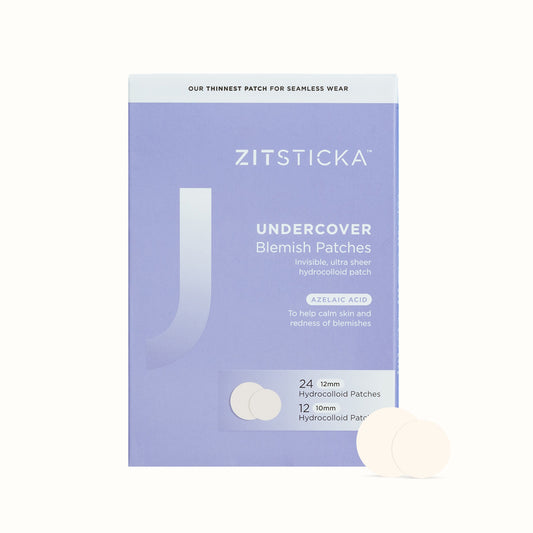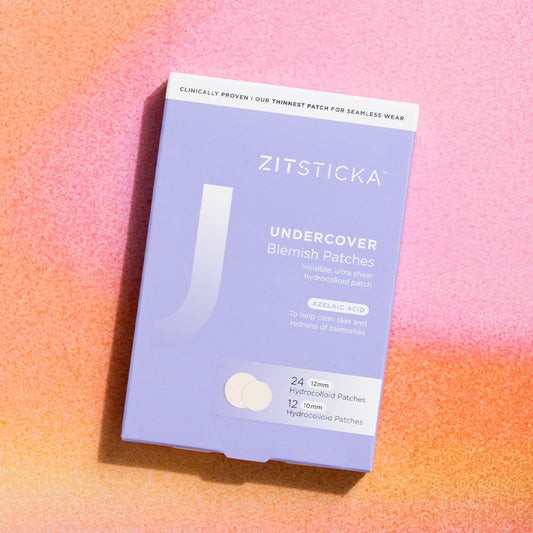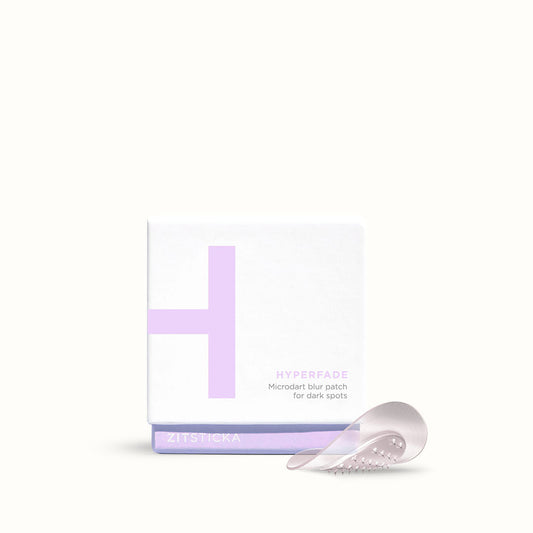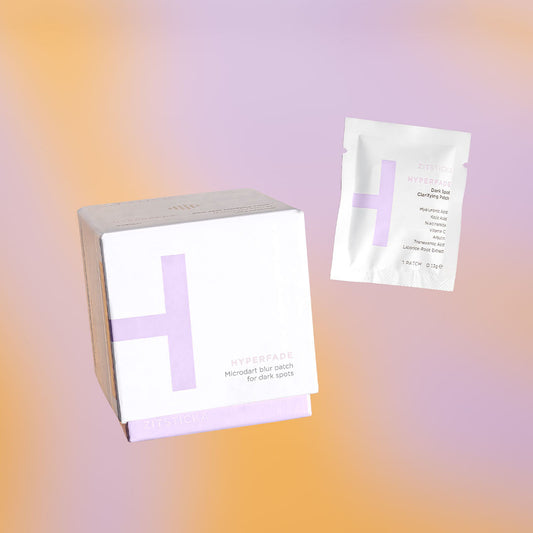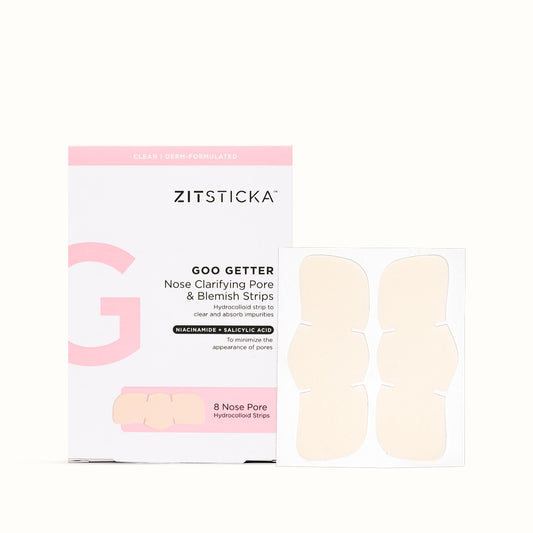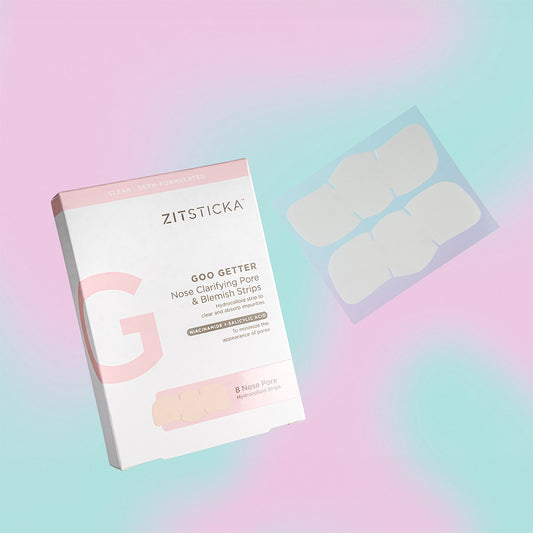By: Madeleine Woon
Unlike beachtown merch, shell necklaces and tacky fridge magnets, pockmarks are unwanted souvenirs that nobody asked for. Caused mostly by chronic acne, and sometimes by skin infections and chickenpox, dealing with pockmarks can be as nightmare-inducing as the skin issue that caused them in the first place. A scar to remind you of the time you went into battle with your breakouts? Gee, thanks skin, you shouldn’t have.
Any inflammatory pimple has the potential to leave you with a pockmark. Whether you’ve had them in the past and are looking to improve their appearance, or you want to arm yourself with knowledge to avoid them in the future, we got you below. A word to the wise: early invention is key, so let’s get down to business.
What are pockmarks?
The term "pockmark" describes a hollow, indented scar on the skin that occurs when the deeper layers on the skin become damaged. As these deeper layers heal, extra collagen is produced, which can leave behind scar tissue that doesn’t match the rest of the skin. Pockmarks are not created equally—they vary in size and appearance, which we’ll go into detail below.
Ice-pick scars. These are small, narrow and deep, like a tiny ice pick was responsible for creating the hole.
Rolling scars. These are broad, sunken depressions with well-defined edges. A very complimentary explanation of a very annoying face friend.
Boxcar scars. These are similar to boxcar scars, but are smoother and shallower in appearance, making the skin surface look uneven and "rolling" like Tuscan hills.
Where do they come from?
All pockmark scars are caused by collagen damage from inflammation, meaning that cystic acne will put you at high-risk of developing pockmarks.
What’s the difference between post-inflammatory hyperpigmentation (PIH) and pockmarks?
Knowledge is power when it comes to treating pockmarks. First thing is first: determining what is and what isn’t an acne scar. Those flat, dark patches left behind in the wake of a breakout aren’t actually pockmarks—they’re actually signs of post-inflammatory hyperpigmentation (PIH). It’s easy to see why people confuse the two, however PIH is just your body’s natural response to skin trauma, be that picking a zit (guilty as charged) or scratching at a mosquito bite. These marks fade eventually on their own, and the healing process can be expedited with the help of your good pal, HYPERFADE.
Pockmarks, on the other hand, are texture irregularities—think indentations or raised, bumpy scars—not just pigmentation.
Okay, and how the hell do I get rid of them?
Pockmarks are scars by definition, meaning that they’re permanent. It’s not all bad, though: there’s plenty of options out there to improve indented scarring to impressive degrees. Here’s how:
See a derm. The best way to prevent pockmarks is by enlisting the help of a dermatologist early on in your skin journey. A delay in seeking out professional help can result in scars. “Start with controlling and treating the acne first—otherwise, you may just be chasing more scars,” says dermatologist Naissan O. Wesley, M.D., FACMS, adding that some acne treatments will help improve the appearance of acne scars in and of themselves. “Once the acne is under control and there is not much new acne formation, then it would be appropriate to undergo additional acne scar treatments if needed to treat any scars still present.”
Avoid picking. Once you’ve hightailed it to the dermatologist, refrain from picking, scratching or squeezing your zits in the meantime. "Picking at your acne can force debris deeper into the dermis, spreading an infection to other tissue and worsening inflammation and scarring,” says Rachel Maiman, MD, cosmetic and general dermatologist at Marmur Medical.
Over-the-counter treatment creams. If you've got very shallow indented scars, topical treatments could help. The best ingredients to look out for in the good fight against the appearance of pockmarks are retinol, alpha hydroxy acids and vitamin C. Retinol is an active ingredient known for stimulating collagen production to help reverse the collagen deficiency that created the scars in the first place. AHAs like glycolic acid, along with vitamin C, can also be helpful in stimulating collagen, helping to create smoother, fresher and brighter skin.
Microneedling. One of the best treatment methods for indented scarring, microneedling tricks your body into thinking it’s injured, in order for it to stimulate a repair response in your body that increases collagen production and improves scar appearance.
Laser. Fractionated non-ablative and ablative resurfacing lasers are also great options. These types of lasers create micro-columns of destruction in your skin in order to encourage new collagen growth. It’s as painful as it sounds, but also a tried-and-true treatment for reducing the appearance of pockmarks.
Chemical peels. While not as effective as device-based treatments, chemical peels can still be helpful in exposing fresh, healthy tissue and stimulating that collagen production to reduce the appearance of scars.
Microdermabrasion. Microdermabrasion is another type of resurfacing treatment that removes the epidermis. Instead of using acids like those used in a chemical peel, microdermabrasion consists of abrasive ingredients to remove skin cells.
Want to end those inflammatory zits early? Click here for the secret weapon.
